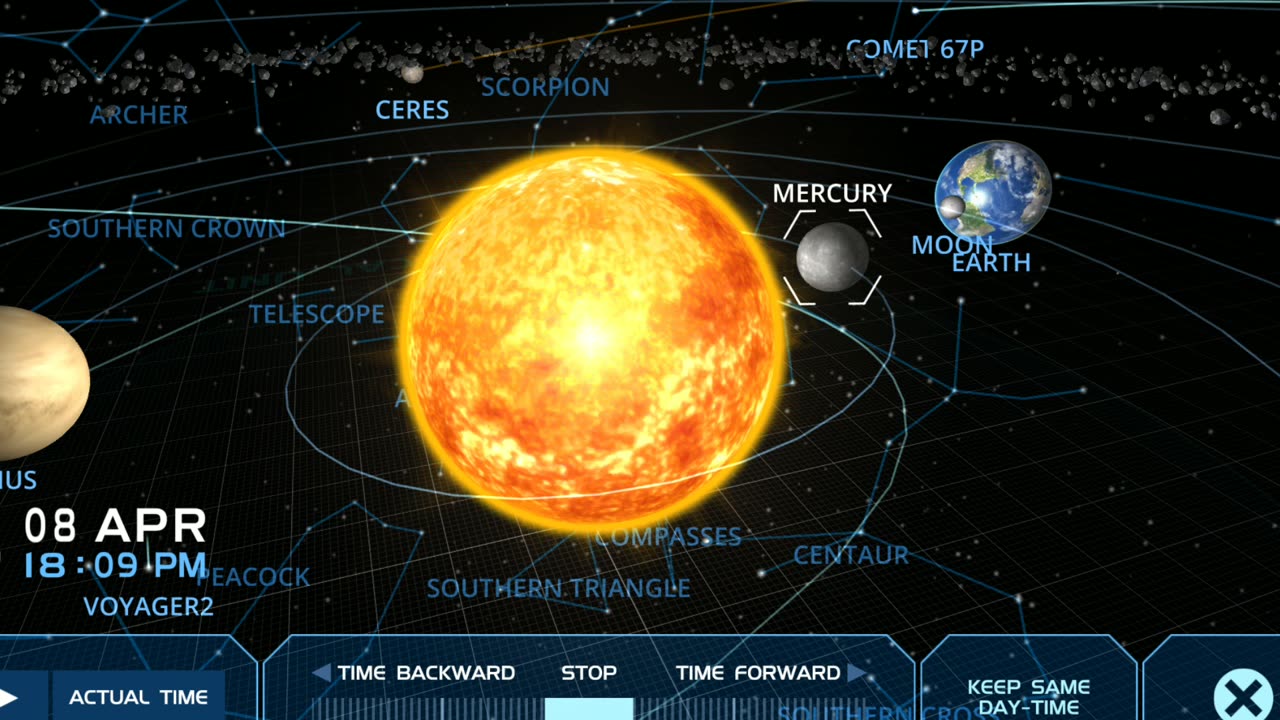Premium Only Content

Mercury Rising also known as APOLLO or HERMES! - April 8th Eclipse - A Short by SnipeRChRoNiCLeS
With Great Thanx To All Clip Artists & Tune Creators featured in this Video.😇Maybe this Eclipse is NOT in favour of the evil doers! We shall see!👀
Full Tune Link to Truth Seekah - Wingardium Leviosa Track.
👉 https://rumble.com/v35thno-truth-seekah-.html
Further theory link...
https://rumble.com/v4nb54r-solar-eclipse-mystery-solved...-this-is-huge-03.04.2024-reloaded-from.html
GET A LOAD OF THIS MESS...
Mercury, the innermost planet of the solar system and the eighth in size and mass. Its closeness to the Sun and its smallness make it the most elusive of the planets visible to the unaided eye. Because its rising or setting is always within about two hours of the Sun’s, it is never observable when the sky is fully dark. Mercury is designated by the symbol ☿.
Mercury
Mosaic view of Mercury, showing about half the hemisphere of the planet that was illuminated when Mariner 10 departed the planet during its first flyby in March 1974. The landscape is dominated by large impact basins and craters with extensive intercrater plains. Half of the enormous Caloris impact basin is discernible as a slightly darker region near the terminator (shadow line) just above centre.
The difficulty in seeing it notwithstanding, Mercury was known at least by Sumerian times, some 5,000 years ago. In Classical Greece it was called Apollo when it appeared as a morning star just before sunrise and Hermes, the Greek equivalent of the Roman god Mercury, when it appeared as an evening star just after sunset. Hermes was the swift messenger of the gods, and the planet’s name is thus likely a reference to its rapid motions relative to other objects in the sky. Even in more recent eras, many sky observers passed their entire lifetimes without ever seeing Mercury. It is reputed that Nicolaus Copernicus, whose heliocentric model of the heavens in the 16th century explained why Mercury and Venus always appear in close proximity to the Sun, expressed a deathbed regret that he had never set eyes on the planet Mercury himself.
Messenger: Mercury
Image of Mercury captured by a camera aboard the Messenger spacecraft.
Until the last part of the 20th century, Mercury was one of the least-understood planets, and even now the shortage of information about it leaves many basic questions unsettled. Indeed, the length of its day was not determined until the 1960s, and Mercury’s nearness to the Sun gave scientists bound to Earth many observational hurdles, which were overcome only by the Messenger (Mercury Surface, Space Environment, Geochemistry, and Ranging) probe. Messenger was launched in 2004, flew past the planet twice in 2008 and once in 2009, and settled into orbit in 2011. It mapped the entire surface of Mercury before crashing into the planet in 2015. Mercury’s proximity to the Sun has also been exploited to confirm predictions made by relativity theory about the way gravity affects space and time.
Planetary data for Mercury
*Time required for the planet to return to the same position in the sky relative to the Sun as seen from Earth.
mean distance from Sun 57,909,227 km (0.39 AU)
eccentricity of orbit 0.2056
inclination of orbit to ecliptic 7.0°
Mercurian year (sidereal period of revolution) 87.97 Earth days
maximum visual magnitude −1.9
mean synodic period* 116 Earth days
mean orbital velocity 47.36 km/sec
radius (mean) 2,439.7 km
surface area 74,797,000 km2
mass 3.30 × 1023 kg
mean density 5.43 g/cm3
mean surface gravity 370 cm/sec2
escape velocity 4.25 km/sec
rotation period (Mercurian sidereal day) 58.646 Earth days
Mercurian mean solar day 175.9 Earth days
inclination of equator to orbit 0°
magnetic field strength 0.003 gauss
mean surface temperature 440 K (332 °F, 167 °C)
surface temperature extremes
700 K (800 °F, 430 °C);
90 K (−300 °F, −180 °C)
typical surface pressure about 10−15 bar
number of known moons none
At first glance the surface of the planet looks similar to the cratered terrain of the Moon, an impression reinforced by the roughly comparable size of the two bodies. Mercury is far denser, however, having a metallic core that takes up about 61 percent of its volume (compared with 4 percent for the Moon and 16 percent for Earth). Moreover, its surface shows significant differences from lunar terrain, including a lack of the massive dark-coloured lava flows known as maria and the presence of buckles and scarps that suggest Mercury is shrinking.
Basic astronomical data
Mercury is an extreme planet in several respects. Because of its nearness to the Sun—its average orbital distance is 58 million km (36 million miles)—it has the shortest year (a revolution period of 88 days) and receives the most intense solar radiation of all the planets. With a radius of about 2,440 km (1,516 miles), Mercury is the smallest major planet, smaller even than Jupiter’s largest moon, Ganymede, or Saturn’s largest moon, Titan. In addition, Mercury is unusually dense. Although its mean density is roughly that of Earth’s, it has less mass and so is less compressed by its own gravity; when corrected for self-compression, Mercury’s density is the highest of any planet. Nearly two-thirds of Mercury’s mass is contained in its largely iron core, which extends from the planet’s centre to a radius of about 2,100 km (1,300 miles), or about 85 percent of the way to its surface. The planet’s rocky outer shell—its surface crust and underlying mantle—is only some 300 km (200 miles) thick.
Observational challenges
transit of Mercury across the face of the Sun
transit of Mercury across the face of the Sun
Transit of Mercury across the face of the Sun, a composite of five separate images in ultraviolet light taken by the Transition Region and Coronal Explorer (TRACE) satellite in Earth orbit, November 15, 1999. The time interval between successive images is about seven minutes.
As seen from Earth’s surface, Mercury hides in dusk and twilight, never getting more than about 28° in angular distance from the Sun. It takes about 116 days for successive elongations—i.e., for Mercury to return to the same point relative to the Sun—in the morning or evening sky. This is called Mercury’s synodic period. Its nearness to the horizon also means that Mercury is always seen through more of Earth’s turbulent atmosphere, which blurs the view. Even above the atmosphere, orbiting observatories such as the Hubble Space Telescope are restricted by the high sensitivity of their instruments from pointing as close to the Sun as would be required for observing Mercury. Because Mercury’s orbit lies within Earth’s, it occasionally passes directly between Earth and the Sun. This event, in which the planet can be observed telescopically or by spacecraft instruments as a small black dot crossing the bright solar disk, is called a transit (see eclipse), and it occurs about a dozen times in a century. The next transit of Mercury will occur in 2019.
Mercury also presents difficulties to study by space probe. Because the planet is located deep in the Sun’s gravity field, a great deal of energy is needed to shape the trajectory of a spacecraft to get it from Earth’s orbit to Mercury’s in such a way that it can go into orbit around the planet or land on it. The first spacecraft to visit Mercury, Mariner 10, was in orbit around the Sun when it made three brief flybys of the planet in 1974–75. In developing subsequent missions to Mercury, such as the U.S. Messenger spacecraft launched in 2004, spaceflight engineers calculated complex routes, making use of gravity assists (see spaceflight: Planetary flights) from repeated flybys of Venus and Mercury over the course of several years. In the Messenger mission design, after conducting observations from moderate distances during planetary flybys in 2008 and 2009, the spacecraft entered into an elongated orbit around Mercury for close-up investigations in 2011. In addition, the extreme heat, not only from the Sun but also reradiated from Mercury itself, challenged spacecraft designers to keep instruments cool enough to operate.
Orbital and rotational effects
Mercury’s orbit is the most inclined of the planets, tilting about 7° from the ecliptic, the plane defined by the orbit of Earth around the Sun; it is also the most eccentric, or elongated planetary orbit. As a result of the elongated orbit, the Sun appears more than twice as bright in Mercury’s sky when the planet is closest to the Sun (at perihelion), at 46 million km (29 million miles), than when it is farthest from the Sun (at aphelion), at nearly 70 million km (43 million miles). The planet’s rotation period of 58.6 Earth days with respect to the stars—i.e., the length of its sidereal day—causes the Sun to drift slowly westward in Mercury’s sky. Because Mercury is also orbiting the Sun, its rotation and revolution periods combine such that the Sun takes three Mercurian sidereal days, or 176 Earth days, to make a full circuit—the length of its solar day.
As described by Kepler’s laws of planetary motion, Mercury travels around the Sun so swiftly near perihelion that the Sun appears to reverse course in Mercury’s sky, briefly moving eastward before resuming its westerly advance. The two locations on Mercury’s equator where this oscillation takes place at noon are called hot poles. As the overhead Sun lingers there, heating them preferentially, surface temperatures can exceed 700 kelvins (K; 800 °F, 430 °C). The two equatorial locations 90° from the hot poles, called warm poles, never get nearly as hot. From the perspective of the warm poles, the Sun is already low on the horizon and about to set when it grows the brightest and performs its brief course reversal. Near the north and south rotational poles of Mercury, ground temperatures are even colder, below 200 K (−100 °F, −70 °C), when lit by grazing sunlight. Surface temperatures drop to about 90 K (−300 °F, −180 °C) during Mercury’s long nights before sunrise.
Mercury’s temperature range is the most extreme of the solar system’s four inner, terrestrial planets, but the planet’s nightside would be even colder if Mercury kept one face perpetually toward the Sun and the other in perpetual darkness. Until Earth-based radar observations proved otherwise in the 1960s, astronomers had long believed that to be the case, which would follow if Mercury’s rotation were synchronous—that is, if its rotation period were the same as its 88-day revolution period. Telescopic observers, limited to viewing Mercury periodically under conditions dictated by Mercury’s angular distance from the Sun, had been misled into concluding that their seeing the same barely distinguishable features on Mercury’s surface on each viewing occasion indicated a synchronous rotation. The radar studies revealed that the planet’s 58.6-day rotation period is not only different from its orbital period but also exactly two-thirds of it.
Mercury’s orbital eccentricity and the strong solar tides—deformations raised in the body of the planet by the Sun’s gravitational attraction—apparently explain why the planet rotates three times for every two times that it orbits the Sun. Mercury presumably had spun faster when it was forming, but it was slowed by tidal forces. Instead of slowing to a state of synchronous rotation, as has happened to many planetary satellites, including Earth’s Moon, Mercury became trapped at the 58.6-day rotation rate. At this rate the Sun tugs repeatedly and especially strongly on the tidally induced bulges in Mercury’s crust at the hot poles. The chances of trapping the spin at the 58.6-day period were greatly enhanced by tidal friction between the solid mantle and molten core of the young planet.
Mercury in tests of relativity
Mercury’s orbital motion has played an important role in the development and testing of theories of the nature of gravity because it is perturbed by the gravitational pull of the Sun and the other planets. The effect appears as a gyration, or precession, of Mercury’s orbit around the Sun. This small motion, about 9.5′ (0.16°) of arc per century, has been known for two centuries, and, in fact, all but about 7 percent of it—corresponding to 43″ (0.012°) of arc—could be explained by the theory of gravity proposed by Isaac Newton. The discrepancy was too large to ignore, however, and explanations were offered, usually invoking as-yet-undiscovered planets within Mercury’s orbit. In 1915 Albert Einstein showed that the treatment of gravity in his general theory of relativity could explain the small discrepancy. Thus, the precession of Mercury’s orbit became an important observational verification of Einstein’s theory.
Mercury was subsequently employed in additional tests of relativity, which made use of the fact that radar signals that are reflected from its surface when it is on the opposite side of the Sun from Earth (at superior conjunction) must pass close to the Sun. The general theory of relativity predicts that such electromagnetic signals, moving in the warped space caused by the Sun’s immense gravity, will follow a slightly different path and take a slightly different time to traverse that space than if the Sun were absent. By comparing reflected radar signals with the specific predictions of the general theory, scientists achieved a second important confirmation of relativity.
Mariner 10, radar, and Messenger
Mercury
Mercury
Mosaic view of Mercury, showing about half the hemisphere of the planet that was illuminated when Mariner 10 approached the planet during its first flyby in March 1974. The landscape is dominated by large impact basins and craters with extensive intercrater plains.
Scientific knowledge about Mercury was greatly increased by the three flybys of Mariner 10. Because the spacecraft was placed in an orbit around the Sun equal to one Mercurian solar day, it made each of its three passes when exactly the same half of the planet was in sunlight. Slightly less than the illuminated half, or about 45 percent of Mercury’s surface, was eventually imaged. Mariner 10 also collected data on particles and magnetic fields during its flybys, which included two close nightside encounters and one distant dayside pass. Mercury was discovered to have a surprisingly Earth-like (though much weaker) magnetic field (see geomagnetic field). Scientists had not anticipated a planetary magnetic field for such a small, slowly rotating body because the dynamo theories that described the phenomenon required thoroughly molten cores and rather rapid planetary spins. Even more rapidly spinning bodies such as the Moon and Mars lack magnetic fields. In addition, Mariner 10’s spectral measurements showed that Mercury has an extremely tenuous atmosphere.
The first significant telescopic data about Mercury after the Mariner mission resulted in the discovery in the mid-1980s of sodium in the atmosphere. Subsequently, better Earth-based techniques enabled the variations of several of Mercury’s atmospheric components to be studied from place to place and over time. Also, ongoing improvement in the power and sensitivity of ground-based radar resulted in intriguing maps of the hemisphere unseen by Mariner 10 and, in particular, the discovery of condensed material, probably water ice, in permanently shadowed craters near the poles.
In 2008 the Messenger probe made its first flyby of Mercury and obtained photos of more than a third of the hemisphere that had been unseen by Mariner 10. The probe passed within 200 km (120 miles) of the planet’s surface and saw many previously unknown geologic features. In 2011 Messenger entered Mercury’s orbit and began a one-year study. Messenger’s mission was extended in 2012, and in that same year it confirmed that the condensed material in permanently shadowed craters near the north pole was water ice covered by a layer of dark organic compounds. Its mission ended in 2015, when the spacecraft crashed into the planet after running out of fuel.
In 2018 the European Space Agency (ESA) and the Japan Aerospace Exploration Agency (JAXA) launched a Mercury mission, BepiColombo, that is scheduled to arrive at Mercury in 2025 and spend one year in orbit. The mission is named after Italian mathematician Giuseppe (“Bepi”) Colombo, who discovered that Mercury’s rotation period is two-thirds of its orbital period. The spacecraft has two parts: ESA’s Mercury Planetary Orbiter, which will study the planet, and JAXA’s Mercury Magnetospheric Orbiter, which will study the magnetosphere.
-
 2:47
2:47
SniperFilesReloaded
6 days agoKILLER GRID WEAPONRY - Reloaded from Biological Medicine
1492 -
 LIVE
LIVE
Nerdrotic
2 hours agoDown the Rabbit Hole with Kurt Metzger | Forbidden Frontier #090
2,193 watching -
 LIVE
LIVE
vivafrei
7 hours agoEp. 251: Bogus Social Security Payments? DOGE Lawsduit W's! Maddow Defamation! & MORE! Viva & Barnes
22,340 watching -
 LIVE
LIVE
Vigilant News Network
6 hours agoBombshell Study Reveals Where the COVID Vaccine Deaths Are Hiding | Media Blackout
2,423 watching -
 LIVE
LIVE
Sarah Westall
1 hour agoDOGE: Crime & Hysteria bringing the Critics & the Fearful - Plus new CDC/Ukraine Crime w/ Dr Fleming
397 watching -
 45:39
45:39
Survive History
7 hours agoCould You Survive in the Shield Wall at the Battle of Hastings?
115 -
 1:50:28
1:50:28
TheDozenPodcast
6 hours agoViolence, Abuse, Jail, Reform: Michael Maisey
40 -
 23:01
23:01
Mrgunsngear
1 day ago $1.18 earnedWolfpack Armory AW15 MK5 AR-15 Review 🇺🇸
5.26K9 -
 25:59
25:59
TampaAerialMedia
1 day agoUpdate ANNA MARIA ISLAND 2025
128 -
 59:31
59:31
Squaring The Circle, A Randall Carlson Podcast
8 hours ago#039: How Politics & War, Art & Science Shape Our World; A Cultural Commentary From Randall Carlson
1.11K2